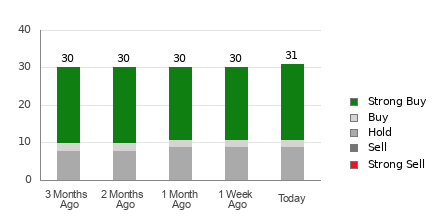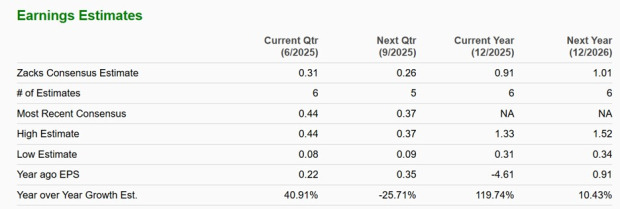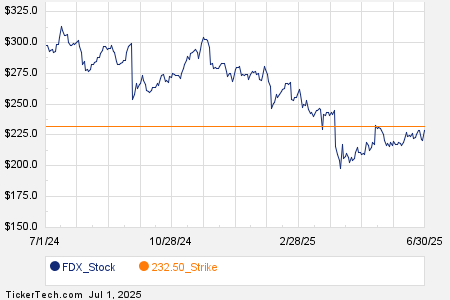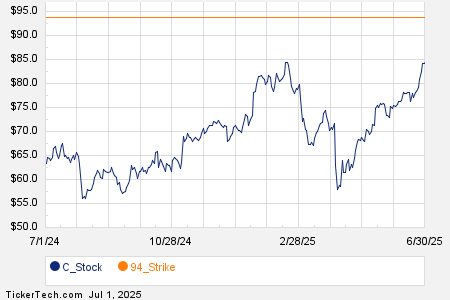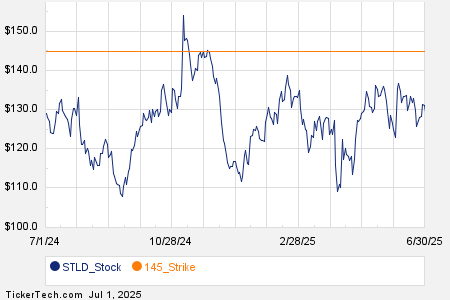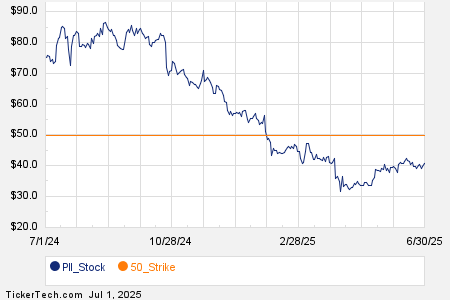
Restructuring Progress
Warner Bros. Discovery, Inc. (NASDAQ:WBD) is now at the latter stages of its extensive restructuring since the merger closed in April 2022 and has made significant progress on many of its initial financial and strategic objectives.
Revamping its global organization and establishing enhanced financial controls to better manage the integration of its diverse global businesses were swift actions taken by WBD post-merger.
The company has been laser-focused on increasing its synergies, EBITDA, and Free Cash Flow with the objective of reducing debt incurred as part of the merger transaction.
Despite its many financial and business accomplishments, WBD continues to be the most undervalued diversified global media company, in my opinion, mainly due to significant GAAP losses and negative EPS reported since the merger.
I continue to believe that there is significant near- and long-term upside in WBD due to the company’s strong fundamentals and financial performance.
Third Quarter Financial Results
WBD’s third quarter financial results included its highest ever quarterly Adjusted EBITDA of $3.0 billion, its second highest quarterly Free Cash Flow of $2.1 billion, and debt pay-downs of $2.4 billion.
CEO David Zaslav and CFO Gunnar Wiedenfels made a strong case for the company’s results and prospects, but the market reacted very poorly when Wiedenfels cautioned about future uncertainties in the linear advertising market.
Describing the target leverage for a specific date as a multiple of Adjusted EBITDA becomes circular with multiple unknowns. It would be much more straightforward for WBD to simply say that in 2024 it intends to reduce its debt by another $4 billion to $6 billion.
Financial Presentation
To date, WBD has focused its earnings presentations on Adjusted EBITDA and Free Cash Flow. However, I believe these are largely underappreciated by the market in valuing WBD’s equity and are certainly ignored by the media which has a difficult time putting EBITDA and FCF in context.
Many investors and financial media reporters prefer to focus on earnings and P/E ratios as a way to gauge a company’s performance over time and to compare companies.
Why Warner Media Should Follow Disney’s Lead in Adjusted Earnings
Warner Media, WBD, has experienced continuing significant GAAP losses and negative EPS. Over the 18-month period ending September 30, 2023, WBD recorded approximately $16.6 billion of acquisition-related charges – including $11.0 billion (all non-cash) of amortization expense of acquisition-related intangibles, $4.3 billion (approximately $3.0 billion non-cash) of restructuring and impairment charges, and $1.3 billion (all cash) of transaction and integration expenses. Such charges have distorted WBD’s traditional GAAP net income (loss) and GAAP EPS disclosures, rendering them somewhat meaningless.
Presentation of Adjusted Earnings
WBD was ahead of its media peers when it began taking restructuring charges soon after its merger closed in April 2022. Similar moves have been made by its peers such as Disney, Paramount Global (PARA), and Comcast Corporation (CMCSA), including significant amortization expenses relating to acquisition-related intangibles. However, unlike WBD, these companies present a supplemental non-GAAP presentation of “Adjusted Earnings” and EPS, excluding non-recurring charges and acquisition-related amortization charges to assist investors in analyzing their core financial results. There is a widespread acceptance of such presentations, with over 95% of S&P 500 companies reporting both GAAP and non-GAAP earnings.
Presenting supplemental non-GAAP earnings and EPS doesn’t change the substance of a company’s financial performance but provides a better framework for investors to analyze a company’s core earnings. It is worth noting that this is a supplemental disclosure and does not replace traditional GAAP disclosures.
Disney’s Presentation of “Diluted EPS excluding certain items”
Disney is an exemplary model, providing a much more meaningful picture of its core earnings performance through its presentation of “Diluted EPS excluding certain items”. For its fiscal year ending September 30, 2023, Disney excluded $3.8 billion of restructuring charges and $2.0 billion of amortization charges relating to its acquisition of 20th Century Fox and Hulu.
Disney’s presentation of “Diluted EPS excluding certain items” is the principal earnings-related metric followed by the market and the media, overshadowing GAAP EPS disclosures, restructuring, and amortization charges in its presentation and management discussion on its earnings call.
Analyst use of non-GAAP EPS disclosures
Analyst estimates are generally for adjusted earnings, making it important for companies to present a non-GAAP earnings presentation to create a core earnings baseline on which analysts can base their future earnings estimates. It is nearly impossible for analysts and investors to anticipate restructuring charges and acquisition-related amortization charges unless specifically guided by a company. Therefore, presenting adjusted earnings and EPS provides better peer-to-peer comparisons.
Quantitative models are likely utilizing financial database services without making adjustments to GAAP earnings, potentially causing multiple EPS estimate misses and negative momentum trends.
Media coverage of non-GAAP earnings disclosures
The media generally prioritizes “adjusted EPS” over GAAP EPS if adjusted earnings are reported by a company. Therefore, it is crucial for a company to present its financial results, including its presentation of non-GAAP adjusted earnings and EPS disclosures, to the investment community and media in a meaningful way.
Warner Media, WBD, should consider following Disney’s lead in providing adjusted earnings and EPS presentations to shed light on its core financial performance and assist investors in making informed analyses.
Warner Bros. Discovery, Inc.’s Financial Narration: An Imbalanced Picture
Warner Bros. Discovery, Inc. (WBD) has been in the hot seat for missing multiple EPS estimates, placing it at a significant disadvantage compared to its peers like Disney in the investment community. This shortfall has contributed to WBD’s depreciated relative valuation in the market. However, a closer look at the financial presentations and valuation metrics reveals an intriguing disparity in the narrative.
WBD’s Missed Opportunity of “Diluted EPS Excluding Certain Items”
WBD has weathered a barrage of negative press, with criticisms ranging from excessive debt, substantial losses, to the write-off of Batgirl, undermining the company’s portrayal in the media. A shift in the presentation of adjusted earnings akin to its competitors could potentially reshape this negative narrative surrounding WBD. Although WBD offers detailed financial disclosures and management presentations, the absence of “adjusted earning/EPS” presentations has cast the company in a harsher light versus its peers.
Despite WBD not providing a non-GAAP net earnings/EPS calculation in its press releases or earnings presentations, the necessary data to make such a determination is embedded within its quarterly earnings presentations.
An alternative presentation reveals a stark contrast, offering a much clearer depiction of WBD’s core earnings, away from restructuring and acquisition-related charges. This supplementary information could significantly alter the perception of the company’s financial performance, painting a more positive and accurate picture than its current GAAP and EPS losses.
The Benefits of Disclosure and Adjusted Earnings
The disclosure of adjusted earnings could be a game-changer for WBD. This disclosure would provide a more realistic view of the company’s core earnings, making it more comparable to its peers. By enabling analysts and investors to better estimate adjusted earnings/EPS for future periods, it could potentially mitigate the plague of earnings estimate misses that WBD has been grappling with since its merger. Moreover, the application of P/E ratios as a valuation metric becomes feasible, offering a clearer evaluation of WBD’s relative value. For a company esteemed for its “storytelling” in its studios, this aspect of investor communication is a crucial area for improvement.
WBD Continues to be Significantly Undervalued
Despite facing macroeconomic and industry challenges, WBD has made significant strides in integrating and enhancing its businesses. The company’s response to these challenges has been characterized by experience, adept management, hard work, and creativity. Notably, WBD has focused on monetizing its diverse content across various platforms and revenue streams.
Assessment of WBD’s Enterprise Valuation
At a closing price of $11.20 as of January 5, 2024, WBD’s enterprise valuation stands at approximately $70 billion. This evaluation showcases a remarkably low enterprise valuation and EV/EBITDA ratio relative to its peers. When compared to other media companies such as Disney, Paramount, Comcast, and Netflix, WBD’s valuation metrics stand out for their inexpensiveness.
Notably, WBD’s Free Cash Flow (FCF) perspective also reveals its undervaluation, with higher FCF compared to Disney and a stark contrast to Paramount, which posted negative FCF for the past 12 months.
Prospective Valuation of WBD
With significant restructuring activities in the rearview, WBD is anticipated to continuously amplify its EBITDA and FCF. Based on its performance in the second half of 2023, WBD now operates its Adjusted EBITDA at an approximate annual rate of $12 billion, showcasing its potential for future growth.
Warner Bros. Discovery’s Meteoric Rise and Potential for Further Expansion
Warner Bros. Discovery (WBD) has surpassed all expectations since its merger, reaching $4 billion in synergies and poised for a staggering $5 billion in 2024 and beyond. This remarkable growth is set to elevate the company to new heights in the market.
The Financial Surge of WBD
As WBD continues to bolster its EBITDA and FCF, and aggressively reduce its debt, the enterprise valuation ratio and the share price are expected to experience a substantial increase, reflecting the company’s undeniable successes in its transformation.
The Valuation Conundrum
Despite its unrivaled potential, WBD’s low valuation and EV/EBITDA ratio indicate that it is largely being appraised based on its linear TV business. While this segment remains profitable for now, the company’s focus on cost reduction and maximizing profitability reflects an awareness of the impending decline in cable subscribers and linear advertising revenues.
WBD’s DTC Business will Expand WBD’s Enterprise Value
WBD’s direct-to-consumer (DTC) segment stands as the linchpin for the company’s transformation, drawing on existing strengths to propel WBD to a higher valuation bracket. The company’s streaming business has achieved profitability and is on track to realize DTC segment profits of over $1 billion by 2025.
With similarities to Netflix’s subscriber base 6.5 years ago, and leveraging its global reputation, WBD aims to replicate the astounding growth of Netflix over the years. The recent acquisition of BluTV and the upcoming rollout of its Max platform in various international markets underpin WBD’s strategic moves to enhance its DTC business.
The Unprecedented Potential of the DTC Business
WBD’s DTC segment presents an unparalleled opportunity for growth, buoyed by its extensive global reach and the ceaseless influx of new content. As WBD pivots toward global expansion, its international DTC subscriber base is expected to witness a surge, potentially doubling to 200 million or more over the next few years.
The Impending Financial Windfall
The financial implications of this growth are profound, with the potential to add over $12 billion of incremental annual revenue by adding 100 million subscribers. Such an expansion would result in a significant increase in company-wide EBITDA and could prompt the market to apply a higher EV/EBITDA ratio in valuing WBD’s enterprise and market value.
Paving the Way Forward
Looking ahead, the potential for WBD shares to climb to the mid $20s within the next 12 months appears promising. The company’s diverse global businesses, coupled with its sustained reduction in debt and growth in the DTC business, indicate a bright future for the company, potentially attracting acquisition interest from industry behemoths.
Amid its exceptionally low valuation, the possibility of suitors and activist investors positioning themselves favorably augurs well for a positive momentum in the stock price in the coming months, potentially propelling WBD onto the radar of major players in the industry.
With the 2-year anniversary of the merger approaching, WBD’s board and management are at a crossroads where enhancing shareholder value and considering potential acquisitions are crucial. The company’s remarkable success in debt reduction presents a compelling case for the initiation of stock repurchases, an action that could significantly elevate WBD’s shareholder value and stock stability.



